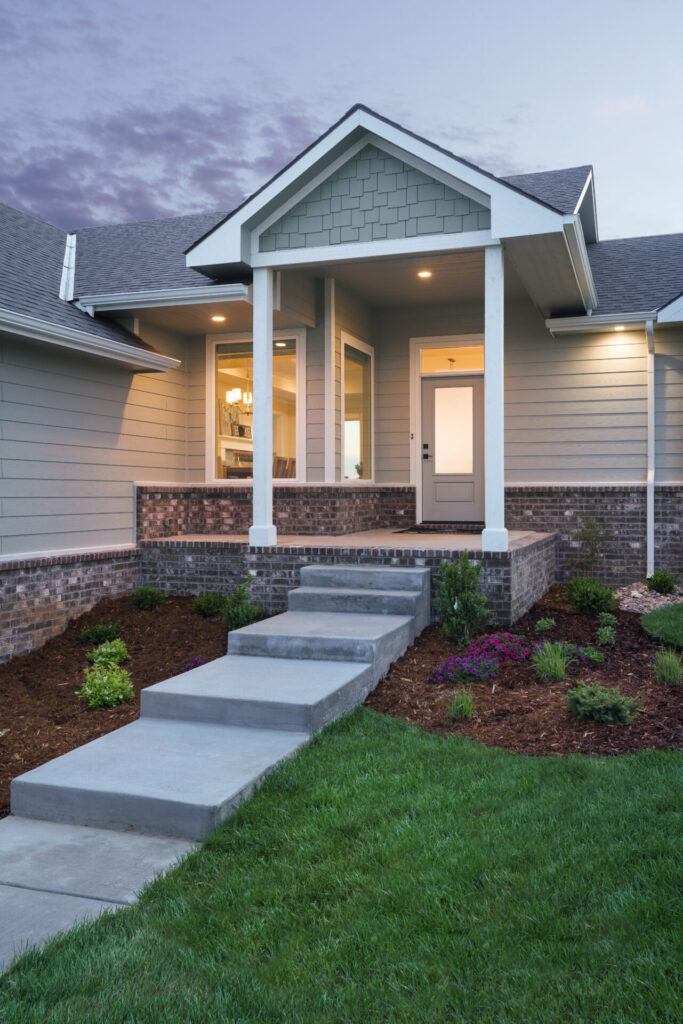Curb appeal is one of the most desired elements of a home. The exterior of your home is the first impression guests, neighbors and the community sees when they visit or view your home. Lighting is an essential selection you must consider when designing the exterior of your home. Exterior lighting design enhances the aesthetics, functionality, and safety of outdoor spaces. A well-thought-out lighting plan takes into account the landscape, architecture, and intended use of the space, while creating a visually-appealing and attractive exterior.
Here are a few key elements of exterior lighting design from luxury custom homebuilder, Paul Gray Homes.
Purpose and Functionality
– Safety and Security: Pathway lighting, motion sensors, and floodlights provide visibility and deter intruders.
– Aesthetics: Accent lighting highlights architectural features, gardens, or sculptures, enhancing curb appeal.
– Task Lighting: Lighting for specific activities like grilling, pool or hot tub accents, outdoor dining, or entertainment areas.
Types of Exterior Lighting:
– Path Lights: Low-level fixtures to illuminate walkways and driveways.
– Wall-Mounted Lights: Sconces, floodlights, or lanterns mounted on walls for ambient or task lighting.
– Spotlights: Focused beams to highlight specific features, like trees or building facades.
– Up-Lighting/Down-Lighting: Up-lights illuminate trees or structures from below, while down-lights create soft shadows from above.
– Step Lights: Recessed lighting in stairs aid in safety and add a modern look.
– String and Festoon Lights: Decorative lights for patios, balconies, and garden areas to create a warm, inviting atmosphere.
Light Sources:
– LED Lights: Energy-efficient, long-lasting, and available in various color temperatures.
– Solar-Powered Lights: Eco-friendly, low-maintenance, but dependent on sunlight for charging.
– Halogen and Incandescent: Provide a warm glow but are less efficient compared to LEDs.
4. Placement and Layering:
– Use a combination of lighting types at different heights and intensities to create depth and interest.
– Balance the use of well-lit pathways with subtle landscape highlights.
5. Control Systems:
– Smart Lighting: Wi-Fi-enabled systems allow for remote control, dimming, and scheduling.
– Motion Sensors: Automatically turn on lights when movement is detected, enhancing security and saving energy.
– Timers and Dimmers: Provide control over brightness and when lights are active.
6. Design Tips:
– Balance and Brightness: Avoid excessive lighting to prevent light pollution and harsh glares.
– Focus on Key Focal Points: Use accent lights to draw attention to key features like plants, water fountains, or architectural elements.
– Warm Lighting for Comfort: Warm white lights (2700K-3000K) create a cozy and inviting atmosphere.
Are you ready to build a custom luxury home that fits you? Do you have questions about what selections you should make in your new home lighting design? Paul Gray Homes is ready to build the custom luxury home of your dreams. Let’s get started here.
